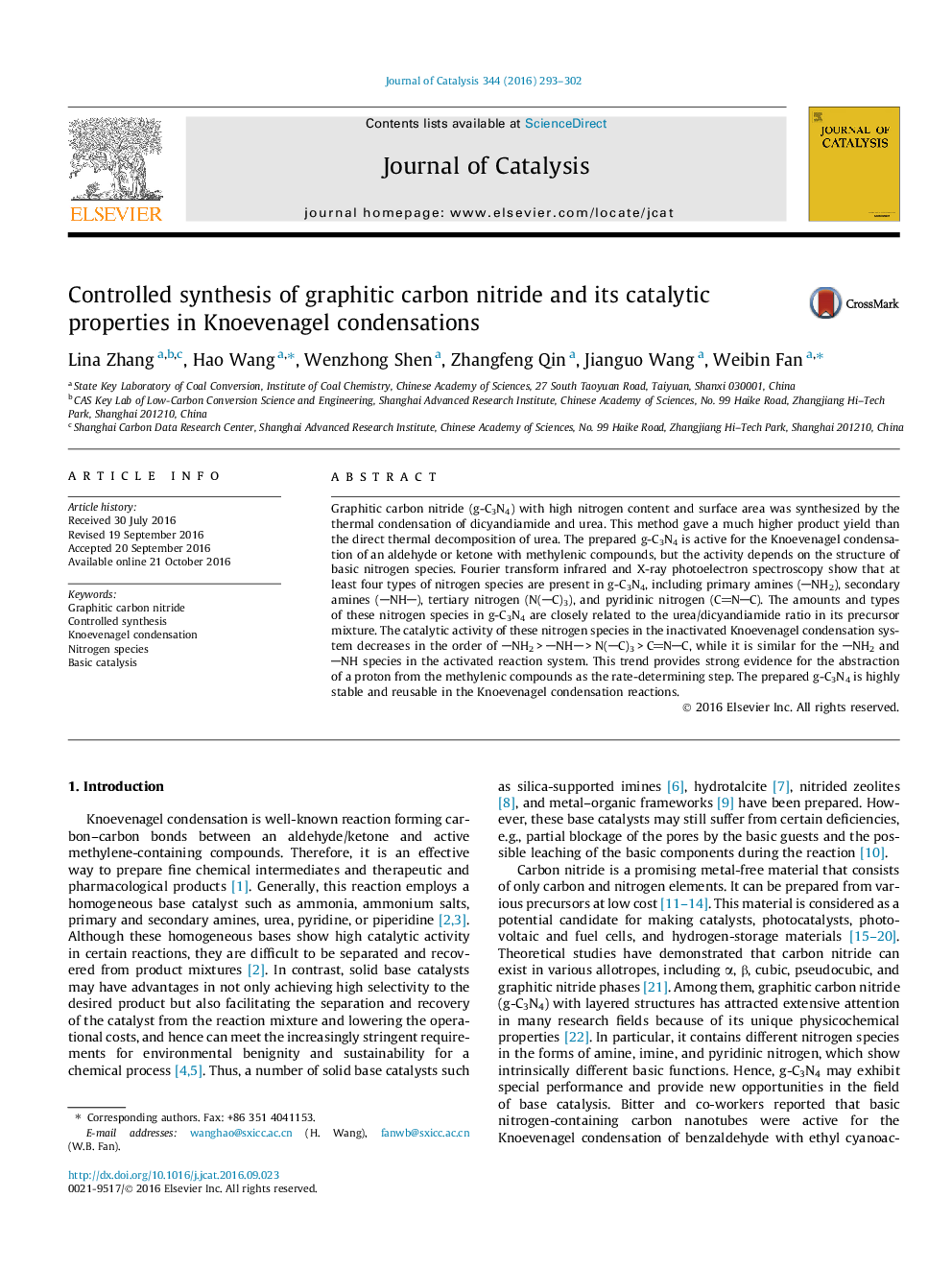| Article ID | Journal | Published Year | Pages | File Type |
|---|---|---|---|---|
| 6455808 | Journal of Catalysis | 2016 | 10 Pages |
â¢g-C3N4 was synthesized by thermal condensation of dicyandiamide and urea.â¢g-C3N4 exhibits excellent performance in the Knoevenagel condensation reactions.â¢Four types of N-containing species are present, NH2, NH, N(C)3, and CNC.â¢The activity of g-C3N4 depends on the amount and structure of surface N species.â¢The activity of nitrogen species follows the order NH2 > NH > N(C)3 > CNC.
Graphitic carbon nitride (g-C3N4) with high nitrogen content and surface area was synthesized by the thermal condensation of dicyandiamide and urea. This method gave a much higher product yield than the direct thermal decomposition of urea. The prepared g-C3N4 is active for the Knoevenagel condensation of an aldehyde or ketone with methylenic compounds, but the activity depends on the structure of basic nitrogen species. Fourier transform infrared and X-ray photoelectron spectroscopy show that at least four types of nitrogen species are present in g-C3N4, including primary amines (NH2), secondary amines (NH), tertiary nitrogen (N(C)3), and pyridinic nitrogen (CNC). The amounts and types of these nitrogen species in g-C3N4 are closely related to the urea/dicyandiamide ratio in its precursor mixture. The catalytic activity of these nitrogen species in the inactivated Knoevenagel condensation system decreases in the order of NH2Â >Â NHÂ >Â N(C)3Â >Â CNC, while it is similar for the NH2 and NH species in the activated reaction system. This trend provides strong evidence for the abstraction of a proton from the methylenic compounds as the rate-determining step. The prepared g-C3N4 is highly stable and reusable in the Knoevenagel condensation reactions.
Graphical abstractDownload high-res image (84KB)Download full-size image
